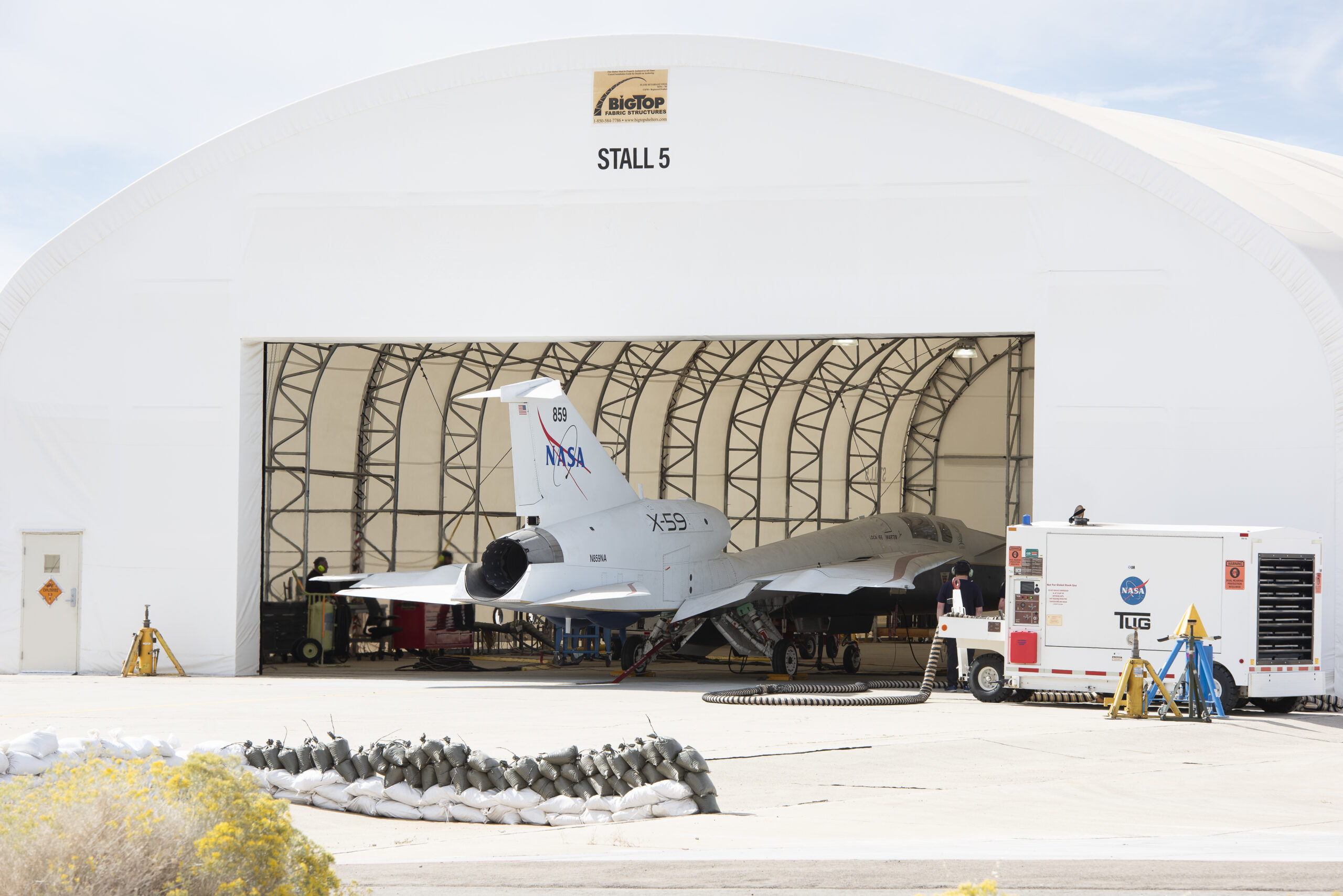NASA’s X-59 Supersonic Aircraft Begins Engine Tests
As of October 30, 2024, NASA’s innovative X-59 quiet supersonic research aircraft is making significant strides at Lockheed Martin’s Skunk Works facility in Palmdale, California. This experimental aircraft, part of NASA’s quest to revolutionize air travel, is advancing through a crucial phase of engine-run tests. These tests are essential to ensure that the aircraft’s systems operate seamlessly together while powered by its own engine.
Unlike previous tests where the X-59 relied on external power sources, these new tests focus on verifying the aircraft’s integrated systems under the influence of its engine. The successful completion of these engine tests is a major milestone, setting the stage for the next steps toward the X-59’s anticipated first flight.
The Purpose and Importance of Engine-Run Tests
The engine-run tests are more than just routine checks; they are pivotal to confirming that the aircraft’s complex systems function harmoniously. During these tests, the engineers can identify any potential issues that could affect the aircraft’s performance. It’s a methodical process to ensure that every system, from the engine to the avionics, is synchronized and ready for the challenges of supersonic flight.
These tests are a precursor to more extensive trials that will include a variety of conditions. By using its engine for power, the X-59 is tested under real-world scenarios, providing valuable data that will be crucial in the subsequent phases of testing and eventual flight.
Next Steps: Aluminum Bird and Taxi Tests
Upon the successful completion of the engine-run tests, the X-59 team will transition to the aluminum bird testing phase. This stage involves feeding data to the aircraft under both normal and simulated failure conditions. It’s an essential part of the testing process that helps engineers understand how the aircraft will respond to different scenarios, ensuring safety and reliability.
Following the aluminum bird tests, the team will conduct a series of taxi tests. During these tests, the aircraft will be moved on the ground, simulating takeoff and landing scenarios. Taxi tests are critical as they allow the team to observe the aircraft’s behavior during ground operations, making any necessary adjustments before the first flight.
Preparing for the First Flight
The culmination of these tests will lead to final preparations for the X-59’s first flight. This phase involves rigorous checks and balances to ensure every component of the aircraft is flight-ready. The team will meticulously review the data collected from previous tests to address any lingering issues.
The first flight of the X-59 is not just a significant step for NASA but also a leap forward in the field of aeronautics. It represents years of research and development aimed at creating a new era of quiet supersonic travel. The success of this aircraft could pave the way for commercial supersonic flights that are environmentally friendly and economically viable.
Understanding the X-59’s Mission
The X-59 is part of NASA’s Low-Boom Flight Demonstration mission, which aims to reduce the noise produced by supersonic aircraft. Traditional supersonic flights generate loud sonic booms that have hindered their commercial use, particularly over populated areas. The X-59, however, is designed to produce a much quieter "sonic thump," making it a groundbreaking development in aviation technology.
By addressing the noise issue, NASA hopes to influence regulations that currently restrict supersonic flight over land. If successful, the X-59 could lead to changes in these regulations, opening the door for faster air travel across continents.
The Role of Lockheed Martin’s Skunk Works
Lockheed Martin’s Skunk Works, renowned for its cutting-edge aerospace projects, plays a vital role in the development of the X-59. This facility is known for its innovative approach to aeronautics, having produced iconic aircraft such as the U-2 and SR-71 Blackbird. The collaboration between NASA and Skunk Works brings together some of the best minds in the field to tackle the challenges of supersonic travel.
The Skunk Works team is responsible for the intricate design and engineering of the X-59, ensuring that it meets NASA’s rigorous standards for safety and performance. Their expertise is instrumental in overcoming the technological hurdles associated with quiet supersonic flight.
Public Interest and Future Implications
The development of the X-59 has captured the public’s imagination, as it promises to transform air travel as we know it. The prospect of reducing flight times significantly, without the disruptive noise of sonic booms, is an exciting possibility for both travelers and the aviation industry.
Moreover, the X-59’s success could have far-reaching implications beyond commercial aviation. Military applications, for instance, could benefit from quieter supersonic aircraft, allowing for stealthier operations. Additionally, the technological advancements achieved through this project could inspire further innovations in aerodynamics and aircraft design.
Conclusion
The X-59’s journey from concept to reality is a testament to human ingenuity and the relentless pursuit of progress. As the aircraft moves closer to its first flight, it represents not only a triumph for NASA and Lockheed Martin but also a beacon of what the future holds for supersonic travel. The data and insights gained from this project could redefine air travel, making it faster, quieter, and more efficient than ever before.
For those interested in following the X-59’s progress, NASA provides regular updates on their official website, offering a glimpse into the future of aeronautics. As this remarkable aircraft continues its journey, it holds the promise of a new era in aviation, where the sky is truly the limit.
For more detailed updates, you can visit NASA’s website.
For more Information, Refer to this article.






























